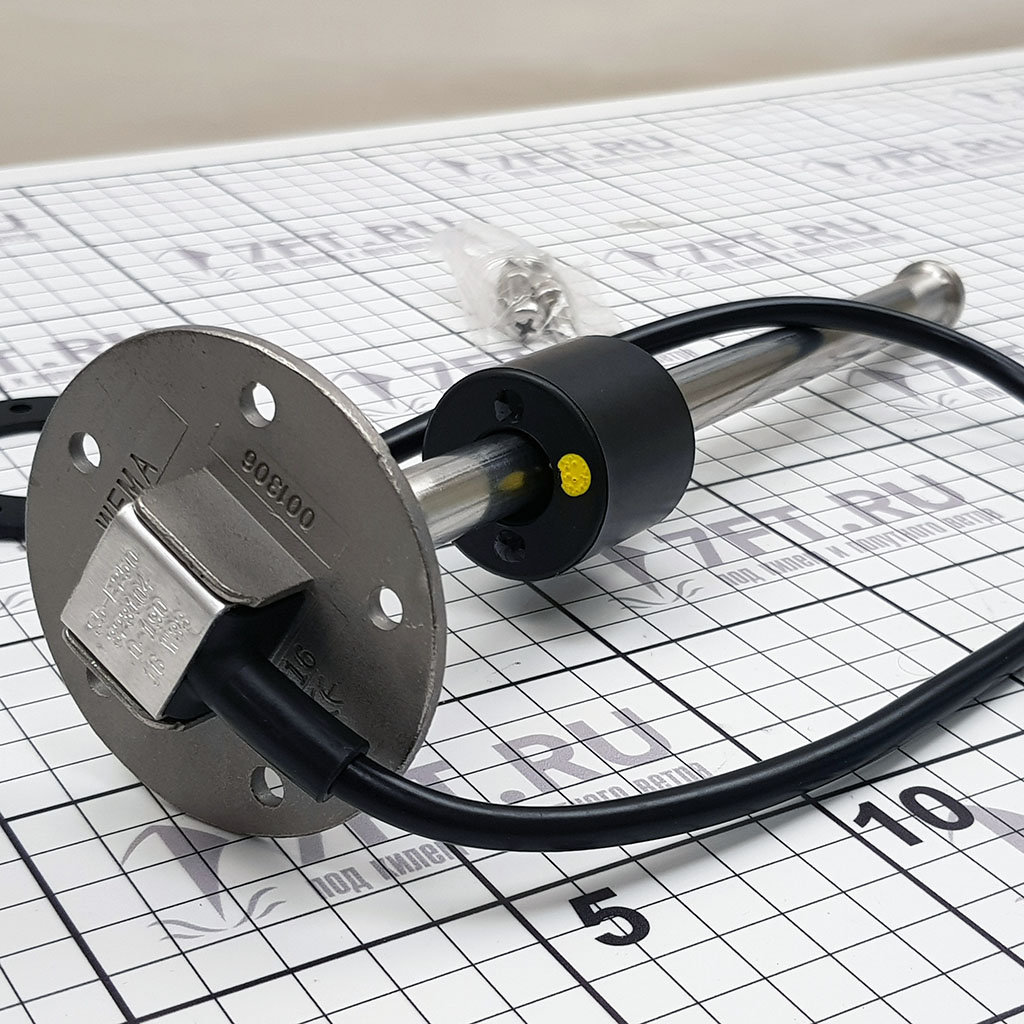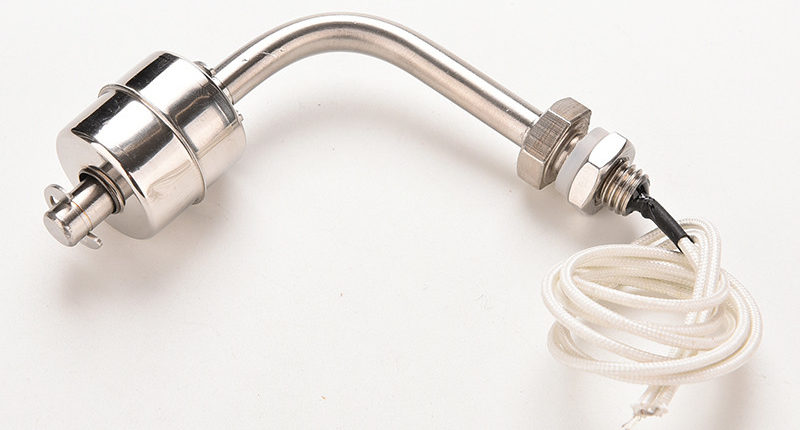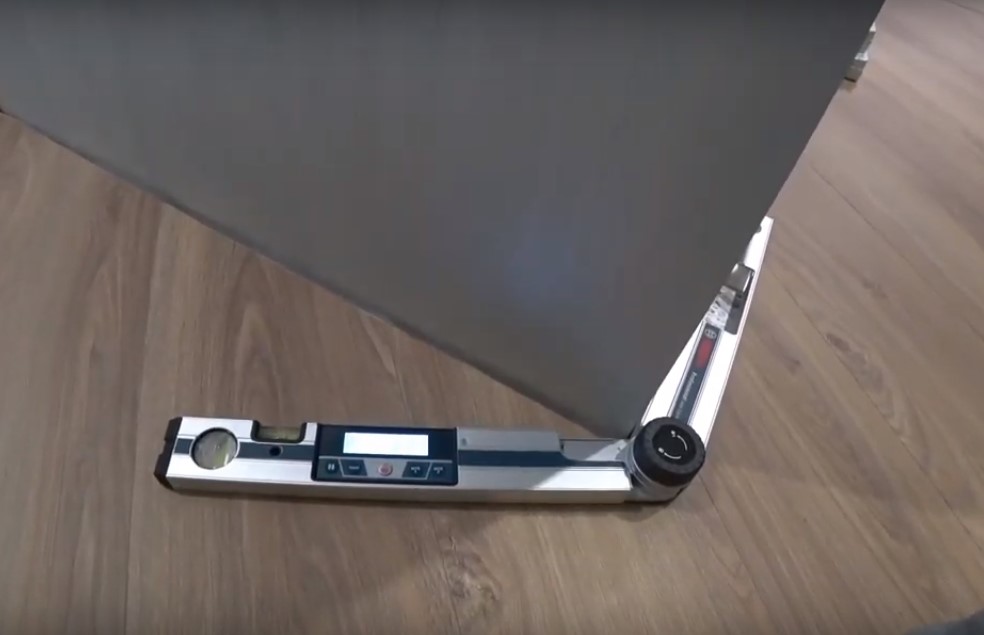Rating of the best fuel level sensors for 2024

Such sensors have become widespread both on stationary objects and on mobile ones. The first category includes stationary storage devices (for example, gas stations). The second category includes vehicles ranging from passenger cars to professional vehicles such as ships and aircraft.
The abbreviated name of such a technique looks like FLS. The FLS device is necessary for the most accurate measurements of the fuel column in the tank. Taking into account the readings provided by the sensor, the program is able to calculate the following items:
- Fuel volumes inside the tank.
- Fuel consumption in relation to a given distance.
- Average fuel consumption (l / 100 km).
- Record refueling or draining of fuel.
Sensors in detail
There are several FLS subtypes on the market. For 2024, the most popular subtypes among buyers:
- Regular type (float);
- Modular (stand-alone installation), this category includes capacitive and ultrasonic types of sensors.
The float type is installed in the tank in the order of the factory. The measured data are displayed on the corresponding screen on the control panel. Depending on the configuration of a particular car, the location of the screen and the amount of data vary. FLS of this category does not differ in accuracy indicators, the float displays only an approximate analysis. Drivers with experience in operating such a meter claim that float deviations reach up to 30% in terms of indicators.
The category of capacitive and ultrasonic meters is considered the most accurate. To acquire such a device, the car owner needs to purchase a specific model and pay for installation in the tank. The cost of equipment in this category is an order of magnitude higher than the average price of a float, and installation will also require financial investments. For the money spent, the driver will receive an accuracy with deviations not exceeding 2%.
Float category
A similar spare part is integrated into the car system in the factory order. The location of the part is inside the fuel tank. The principle of operation is shown in the name of the part: the position of the sensor is regulated by the position of the fuel inside the container. The most common materials for this part are plastic or metal alloys. This part is divided into 2 subtypes:
- Lever type. The float is equipped with a connection to the main meter by means of a metal alloy lever arrangement. The volume of fuel sets changes in the device by increasing or decreasing the volume, the device records the amount of liquid due to voltage drops. This type is universal, which allows the use of lever devices in the most common car configurations.
- Tubular subtype.A pipe is placed in the tank, into which the float is immersed. Changes in the volume of fuel directly affect the pipe inside which the float moves. Specific trajectories are preset for sensor movement. FLS movement is fixed by wires, which transmit information to the main meter. Such structures are necessary to fix the volume of fuel in conditions of car movement along sharp turns or descents and ascents.
The sensors are directly connected to the vehicle's on-board system. With a mass connected to the FLS and a de-energized power supply system of the machine, measurements are impossible. It is important to consider this for drivers who park their cars for a long time, because in such situations, the fuel drain will not be fixed. To avoid this situation, just connect the meter directly to the battery.
PDU-N201-80 sensor (float)

The model is notable for its miniature dimensions and wide functionality. Also, the float will protect the pump from excessive dryness and help in automating the operation of filling and draining the tank. The model is resistant to liquids such as bubble, length is 8 cm, diameter is 2.8 cm.
- Quality material;
- Compatible with liquids with complex chemicals. connections;
- Affordable price.
- Analysis error.
Feedback:
“Not a bad device for the economy category, but one should take into account the high measurement error. Suitable as a temporary solution, in the future I recommend installing a more advanced device. I recommend to everyone who is looking for a quality device in the economy segment! ”
Sensor from Benza firm 500 mm model

The model is notable for the possibility of mechanical adjustment in relation to the tank height. Simply put, trimming the meter is allowed to achieve the required dimensions. It should be borne in mind that after mechanical impact, the sensor will require calibration.
- Adequate cost;
- Cropping capability;
- Positive reviews.
- The need for calibration after trimming.
Feedback:
“The model does an excellent job of measuring fuel. I cut the sensor to the required size, after which I calibrated, now the analysis is quite accurate. I recommend it to anyone looking for a reliable FLS among float ones! ”
Remote control sensor. 100

This sensor performs standard data analysis regarding the level of the fuel inside the tank. Made of stainless steel, connected via a 2-wire circuit, protected from moisture in accordance with the ip65 standard.
- Acceptable cost;
- IP65 moisture protection standard;
- Operation is allowed under conditions up to +125 °.
- Mixed reviews.
Feedback:
“The device does the job, but it's better in this category. The functionality is ascetic, suitable as an intermediate option. I recommend it to anyone looking for a temporary fuel gauge! ”.
Ultrasound category
Meters of this category are arranged according to the principle of emitters type devices. A wire is attached to the sensor that transmits information to the tracker (GPS). The structure is located on the outer wall of the tank. It is important to understand the principle of ultrasonic FLS analysis. The device generates a wave pulse (ultrasonic type), which is directed directly into the liquid, overcoming the wall of the container. Reaching the point of contact between air and liquid, the signal is reflected and recorded using a meter. The calculation of the indicators of the volume of fuel is based on the time spent on the reflection of the pulse.
The accuracy of such a technique is an order of magnitude superior to float devices, but a number of specifics must be taken into account. These specifications include the following points:
- The contact between the sensor and the vessel wall does not allow for deviations. Otherwise, the impulse will undergo incorrect propagation.
- The installed structures inside the tank will affect the correctness of the pulse propagation.In addition, the reservoir material also affects the quality of the ultrasound analysis. It is not recommended to install the ultrasonic meter on a tank containing additional baffles.
- The quality of the analysis will suffer if there are defects (mechanical damage) on the surface of the container. Bumps, chips, roughness will directly affect the measurement.
- Tank bottom sediments also affect the quality of the analysis. The accumulated particles interfere with the propagation and reflection of the ultrasonic wave.
In addition, the installation of this type of appliance will require professional intervention. It is not recommended to install the ultrasonic equipment yourself.
Uzi-0.8 sensor (TC Sensor)

This model is available for sale at a price of 8.5 thousand rubles (on average), installation will require from 3.5 to 6 thousand rubles. The model is notable for the fastening technology, which eliminates the drilling of the tank. The manufacturer excluded direct contact of the device with liquid, and also provided this instance with technology that excludes fire hazard. Users note the high accuracy of the analysis and the ability to connect the device to both Glonass and Gps.
- High accuracy of analyzes;
- Fastening without drilling;
- Connection to Glonass / Gps.
- Expensive.
Feedback:
“An excellent device, it makes fairly accurate measurements. The absence of drilling gives additional tightness, the sensor does not come into direct contact with the liquid. I recommend to everyone who is looking for a quality FLS! ”
Proline sensor model Pr-uod8fq

A wide range of devices of the company for different categories of equipment is noteworthy. Apparatuses for agricultural machinery, professional transport, cars are available under this brand. For convenience, the model is equipped with a centralized data collection system that allows you to record any operations related to refueling or fuel consumption.
- Convenient information collection system;
- Wide range of products;
- Accuracy of measurements.
- Not found.
Feedback:
“Not a bad device, accurate measurements, convenient control system. While this technique can be purchased for less, the model exhibits robust quality worthy of the price tag. Would recommend to anyone looking for a reliable sensor! ”
Uzi-2.5 sensor (TC sensor)

The model in most aspects corresponds to its predecessor (Uzi-0.8), but taking into account the correction of imperfect mechanics. The improved version of the sensor from the Sensor has increased in price by 4 thousand rubles. and costs from 12 thousand rubles (on average). For this price, the user receives an improved ultrasonic control system and a number of guarantees from the manufacturer. With the appropriate connection, the sensor is capable of autonomous operation for up to 30 days, which is useful for drivers stopping for a long parking.
- Mounting eliminates drilling;
- Manufacturer's warranty;
- The possibility of autonomous work up to 30 days.
- Expensive.
Feedback:
“I bought this model because I often stay for long periods. For such events, it is necessary to have a fuel control device, because plums occur regularly without my knowledge. I recommend to everyone who is looking for a FLS with autonomous operation! ”
Capacitive category
The capacitive device (electronic) is placed in the tank depending on the customer's wishes. This category of meters guarantees the highest analysis accuracy. In addition, the owner of such a device has access to information regarding refueling, unintended drains. The architecture of the device consists of tubes connected to the main condenser. The tubes connect to the capacitor board in the upper compartment. The gap between the tubes is required for filling with liquid. The capacitor unit is powered by electric current. The resistance (specific) values of fuel are an order of magnitude lower than those of oxygen. Based on this, small volumes of fuel are reflected in the charging rate of the capacitor unit.
The electronic board of the FLS inside the tank calculates the time for charging. Based on the information received, the meter calculates the height of the fuel column inside the tank (as well as inside the condenser unit). The measurement system is connected to a tracker (GPS). The device transmits information about the analysis directly to the tracker. Data flow is user-regulated. Submission in real time and in delayed order is allowed.
Ets sensor model Rs-485

A capacitive sensor will provide the most accurate analysis results, it is allowed to use the corresponding standard with third-party equipment. Users note the device's reliability, user-friendliness of the interface and high measurement accuracy.
- High accuracy;
- Convenient interface;
- Strong quality.
- Expensive.
Feedback:
“I purchased a capacitive sensor to get the most reliable information on the volume of fuel. This model does an excellent job, besides, I use it in conjunction with sensors from other manufacturers (specific to the tank design) and the results are excellent. I recommend to anyone looking for a device for the most reliable measurements! ”
Sensor from Omnicomm, model Lls-af4, 700 mm

This model has become widespread both in the environment of stationary tanks and transport ones. The working part is made of an aluminum alloy, which excludes rust, communication facilities are protected by appropriate technologies. The sensor is equipped with protection against all types of dirt.
- Reliable device protection;
- Workmanship;
- Accuracy of analyzes.
- Not found.
Feedback:
“I have been using this model for a long time, and the quality suits me. The protection of the electronic part guarantees a long service life, so I do not plan to change the device soon. I recommend to everyone who is looking for a high-quality capacitive FLS! ”
Outcome
To choose the best option, the buyer should study the principles of fuel meters. After studying the specifics, it is important to correlate the characteristics of a particular model and a car. When purchasing the device directly, the following factors must be considered:
- Dimensions of a specific tank. It is important that the device reaches the bottom freely, otherwise measuring small volumes of liquid does not guarantee accurate readings.
- Connection method. Both digital and analog options are available on the market. The latter does not guarantee wide functionality, unlike the former, so it is recommended to take a closer look at the digital options. Also, there are hybrid models (both digital and analog connections are allowed). The choice of sensor interface depends on customer preference.
- There are situations when the most optimal solution is to install several FLS:
- Transport assumes the presence of several tanks for fuel. A similar one is found among trucks of a cargo type (at least 2 containers) or all-terrain vehicles (at least 3 containers). The driver will receive correct information about the volumes of liquid only if there is a separate meter for a separate tank. With proper installation, the program will allow you to familiarize yourself with the standard analysis (the total amount of liquid and the volume of a specific container) and additional capabilities.
- Transport assumes a tiered capacity architecture. A similar thing is found among agricultural equipment (the tank is divided into 2 compartments). This architecture will not allow one sensor to make accurate measurements, so it is recommended to install several.
- Transport assumes a non-standard form factor for the fuel compartment. This is the case with trailers. The non-standard shape of the tank provokes an uneven distribution of the liquid, in view of this, the sensor is not able to perform an accurate analysis. Professionals recommend getting a pair of FLS for a tank of this configuration. Install on opposite sides of the tank.
There is no definitive recommendation regarding the type of FLS.The final choice remains with the car owner, but it is worthwhile to study in detail the types of meters and the specifics of specific models. Also, it is necessary to correlate the characteristics of the selected FLS and the car.
new entries
Categories
Useful
Popular articles
-

Top rating of the best and inexpensive scooters up to 50 cubic meters in 2024
Views: 97661 -

Rating of the best materials for noise insulation for an apartment in 2024
Views: 95021 -

Rating of cheap analogues of expensive medicines for flu and colds for 2024
Views: 91750 -

The best men's running shoes in 2024
Views: 87680 -

Top ranking of the best smartwatches 2024 - price-quality
Views: 85091 -

Best Complex Vitamins in 2024
Views: 84801 -

The best dye for gray hair - 2024 top ranking
Views: 82406 -

Rating of the best wood paints for interior use in 2024
Views: 77201 -

Ranking of the best action cameras from China in 2024
Views: 75268 -

Rating of the best spinning reels in 2024
Views: 74827 -

The most effective calcium supplements for adults and children in 2024
Views: 72462 -

Top rating of the best means for male potency in 2024 with a description
Views: 68295









